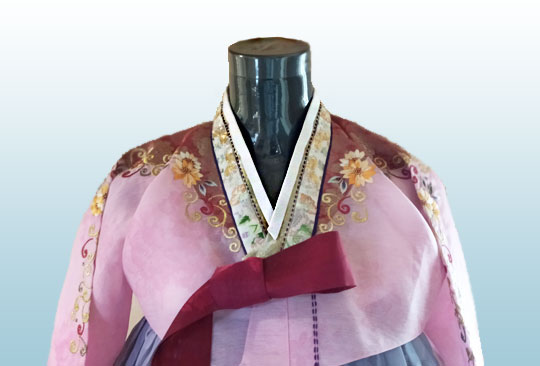The origin of Tongjong
Tongjong is a piece of white cloth which is laid narrowly on the collar of the jogori (traditional Korean clothes) and it is one of the trimmings that characterize our national clothes.
The origin of white tongjong which our people laid on the collar of jogori from the old times was recorded in the national classic Sindansilgi as follows.
“At present we lay white cloth on the collar and call it tongryong. White colour represents Mt. Paektu. Tongryong means the collar of the east people.”
From the old times our ancestors respected Mt. Paektu as nation’s holy, ancestral mountain and liked to wear jogori with white tongjong patterned Mt. Paektu.
The name “tongjong” means the collar of the east people with Mt. Paektu and it was first called “tongryong”. “Tong” means “the east” and “ryong” means “the collar” in Chinese character. It was then phonetically changed to “tongjong”.
Tongjong shows clean, pure, resolute and strong spirit of our nation which is peculiar.
